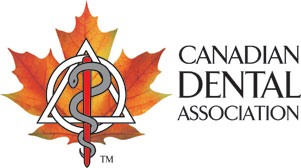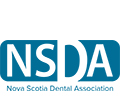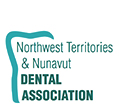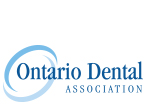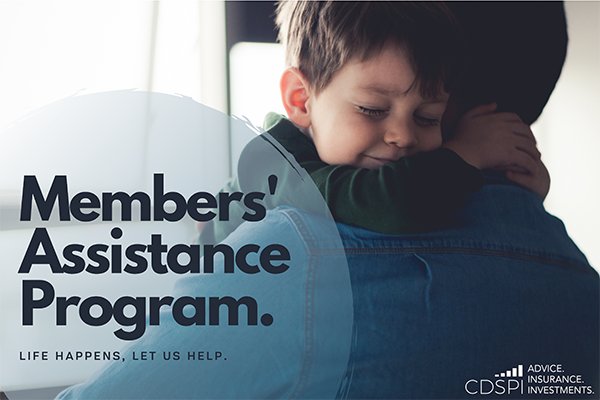
Free counselling, referral and information service for dentists, dental office employees, and their families.
- Canada Emergency Wage Subsidy (CEWS)
- Canada Emergency Rent Subsidy (CERS)
- Canada Emergency Business Account (CEBA)
- Highly Affected Sectors Credit Availability Program (HASCAP)
Canada Emergency Wage Subsidy (CEWS)
The CEWS program is a wage subsidy program to assist businesses that have experienced a revenue decline in a month. The program is currently available retroactively from March 15, 2020 to December 19, 2020 with a likely extension to June 2021. The CEWS program has two versions depending on the qualifying period.
- CEWS 1.0 applicable for qualifying periods 1 through 4 (March 15 - July 4, 2020)
- CEWS 2.0 applicable for qualifying periods 5 through 10 (July 5 - December 19, 2020). Expansion of this program is likely to June 2021.
CEWS Version 1.0 - March 15 - July 4, 2020
CEWS 1.0 offers a 75 percent wage subsidy to eligible entities demonstrating a 15% decline in revenue in March 2020 and/or a 30% decline in revenue in April/May/June 2020 as compared to its prior reference period (the corresponding month of the prior year or alternatively the average of January and February 2020).
CEWS 2.0 - July 5 - December 19, 2020 (likely expansion to June 2021)
CEWS 2.0 is available to any eligible entity who experiences any decline in its monthly revenue for any month of July through December 2020 as compared to its prior reference period. CEWS 2.0 is calculated as two parts:
- Base Subsidy - has varied subsidy scales that adjust the amount of the CEWS subsidy to correlate to the month's revenue decline.
- Top-up Subsidy - up to an additional 25 percent subsidy for employers most adversely affected by the COVID-19 crisis.
The CEWS program is complex and multi-faceted and in order to facilitate an overview of the overall program, the rules that are applicable to the CEWS 1.0 and CEWS 2.0 are specified. Unless noted, the rules should be presumed to apply to the program as a whole.
Eligible Entity
To qualify, you must be an "eligible entity." For all qualifying periods, an eligible entity includes individuals, taxable trusts and corporations, and partnerships (provided 50% or more of the members are eligible entities).
An eligible entity must make several attestations which includes that its CEWS application is true and complete and is not false or misleading in all material respects. In addition, the eligible entity must attest that the qualifying revenue from activities carried on in Canada has declined by the specified amount as compared to their revenue before the COVID-19 crisis. See qualifying period below.
Qualifying Entity (includes entities that pay employees through a Payroll Service Provider/ "Agent" or "cost sharing arrangement")
To be a qualifying entity and hence be able to qualify for the CEWS, the eligible entity must either:
- have a payroll number by March 15, 2020; or
- a qualifying entity uses a payroll service provider who is a person or partnership and by March 15, 2020:
- the qualifying entity employs at least one employee and
- the payroll service provider has a payroll number it uses to make required remittances with respect to the employees of the eligible entity.
Calculating Revenues
Revenue would be calculated using the employer's normal accounting practices (typically the accrual method) or the cash method (if elect to do so). If your normal accounting method is the cash method, legislation will now permit you to elect to use the accrual method, in accordance with generally accepted accounting principles. Revenue would include inflows of cash, receivables or other consideration arising from the rendering of services (or the sale of goods) in Canada. Revenues would not include extra-ordinary items or amounts received under this program, the TWS or the CERS. CRA, has noted that extra-ordinary items would include federal, provincial or municipal Government assistance/relief received due to COVID-19.
In addition, there are further rules that impact the calculation of revenue such as:
- Affiliated groups may elect to compute revenue on a consolidated basis.
- Certain eligible entities receiving substantially all (90% or more) of their revenue from non-arm's length persons are eligible to elect to calculate their decline in revenue based on the non-arm's length persons' decline in revenue. These rules are complex and should be reviewed with your tax advisor.
- Election to include revenue for an eligible entity in its current or prior reference period which pertains to assets acquired by an eligible entity when certain conditions are met.
CEWS 1.0 - Amount of Subsidy and Qualifying Periods
Amount of Subsidy
The subsidy amount for a given employee on eligible remuneration paid between March 15 and July 4, 2020 would be the greater of:
- 75 percent of the amount of eligible remuneration paid to both existing and new employees, up to a maximum benefit of $847 per week or if the employee is not dealing at arm's length with the employer, nil; and
- The amount of eligible remuneration paid, up to a maximum benefit of $847 per week or 75 percent of the employee's baseline remuneration, whichever is less.
Qualifying Periods 1 through 4
Employers will be allowed to calculate their change in revenue in March/April/May/June, 2020 using a year-over-year or an alternative approach to determine their eligibility and must maintain consistency in the approach they use over the periods 1 through 4 of the program.
The following table from the Department of Finance provides for the reference periods (period to test revenue) and the qualifying period (period in which remuneration has been paid).
| Qualifying Period | Required Reduction of Revenue (equal to at least these percentages)* |
Reference Period for Eligibility | |
|---|---|---|---|
| Period 1 | March 15 - April 11 | 15% |
March 2020 over:
|
| Period 2 | April 12 - May 9 | 30% |
Eligible for Period 1 OR April 2020 over:
|
| Period 3 | May 10 - June 6 | 30% |
Eligible for Period 2 (based on revenue decline in period 2) OR May 2020 over:
|
| Period 4 | June 7 - July 4 | 30% |
Eligible for Period 3 (based on revenue decline in period 3) OR June 2020 over:
|
To provide certainty for employers once an employer is found to be eligible for a specific period, the employer will automatically qualify for the immediately following period.
CEWS 2.0 - Top-up Subsidy and Qualifying Periods
Base Subsidy would be a specified rate, applied to the amount of eligible remuneration paid to the employee for the eligibility period, on remuneration of up to $1,129 per week as shown in the table below:
| Claim Period | Qualifying Period | Reference Period for Eligibility | Base rate if revenue reduction percentage (RRP) is at least 50% | Base Rate if RRP < 50% | Maximum weekly Base Subsidy per employee |
|---|---|---|---|---|---|
| Period 5* | July 5 - August 1 |
June 2020 over:
|
60% | 1.2 x RRP | Up to $677 |
| Period 6* | August 2 - August 29 |
July 2020 over:
|
60% | 1.2 x RRP | Up to $677 |
| Period 7 | August 30 - September 26 |
August 2020 over:
|
50% | 1.0 x RRP | Up to $565 |
| Period 8 | September 27 - October 24 |
September 2020 over:
|
40% | 0.8 x RRP | Up to $452 |
| Period 9 | October 25 - November 21 |
October 2020 over
|
40% | 0.8 x RRP | Up to $452 |
| Period 10 | November 22 - December 19 |
November 2020 over
|
40% | 0.8 x RRP | Up to $452 |
| Prescribed Periods | TBD | TBD | TBD | TBD | TBD |
*In Periods 5 and 6, employers who would have been better off in the CEWS design in Periods 1 to 4 would be eligible for a 75 percent wage subsidy if they have a revenue decline of 30 percent or more (safe harbour rule).
** Average of January and February is only available if the eligible entity makes an election to use this alternative approach consistently for period 5 and all subsequent periods.
Top-up Subsidy of up to 25 percent will be available to employers who were the most adversely impacted by COVID-19. The top-up will be determined based on:
Periods 5 to 7:
The revenue drop experienced by an eligible employer when comparing revenues in the preceding three months to the same three months in the prior year or the average monthly revenue in the preceding 3 months to the average monthly revenue in January and February 2020 for periods 5 to 7.
Periods 8 to 10:
Either the revenue drop experienced by an eligible employer when comparing revenues in the preceding three months (as noted above) or one-month revenue decline calculated for purposes of the base subsidy.
The following chart illustrates the calculation of the top-up:
| Revenue decline | Top-up CEWS rate | Top-up calculation = 1.25 x (3-month revenue drop - 50%) |
|---|---|---|
| 70% and over | 25% | 1.25 x (70% - 50%) = 25% |
| 65% | 18.75% | 1.25 x (65% - 50%) = 18.75% |
| 60% | 12.5% | 1.25 x (60% - 50%) = 12.5% |
| 55% | 6.25% | 1.25 x (55% - 50%) = 6.25% |
| 50% and under | 0% | 1.25 x (50% - 50%) = 0% |
Eligible remuneration for both CEWS 1.0 and 2.0 includes salary, wages, and other remuneration such as taxable benefits, not including severance pay or items such as stock option benefits.
Baseline remuneration for a given employee will be determined on the average weekly eligible remuneration, excluding any seven-day periods in which the employee was not remunerated, paid to the eligible employee by the eligible entity during the following periods as follows:
| Claim Period | Baseline Remuneration |
|---|---|
| Periods 1 to 3 |
|
| Period 4 |
|
| Period 5 to 10 |
|
Different alternative methods for determining baseline remuneration may be elected for different qualifying periods.
The subsidy for employees not dealing at arm's length with their employers will only be available to those employed at some point from January 1 to March 15, 2020 and/or between March 1 to May 31, 2019 (Periods 1 - 3), March 1 to June 30, 2019 (for Period 4) or July 1 to December 31, 2019 for Periods 5 to 9.
Refund for Certain Payroll Contributions
A 100 percent refund for certain employer-paid contributions to EI, the CPP, the QPP and the QPIP was introduced as part of this program for furloughed employees. This refund is available on employer-paid contributions for eligible employees for each week throughout which those employees are on leave with pay, and for those employees that the employer is eligible to claim the CEWS.
An employee is considered on leave if that employee is paid by the employer but does not perform any work for the employer. The refund has no weekly maximum benefit per employee and no overall limit to the refund amount that an eligible entity may claim.
Employers will be required to collect and remit employer and employee contributions to each program as usual; eligible employers will apply for a refund at the same time as they apply for the CEWS.
Eligible employees
Eligibility for the CEWS of an employee's remuneration, is limited to individuals employed in Canada and who have not been without remuneration for 14 or more consecutive days in the qualifying period. The 14-day rule does not apply to Periods 5 onward.
Employers that were previously cautioned to exercise particular care in regard to the hiring and dismissing of an employee in any period because of this rule no longer have to worry about qualifying for the CEWS when they hire new employees (or hire back previously laid off employees) during a qualifying periods.
CEWS for furloughed employees
For Periods 5 and 6, the subsidy calculation for a furloughed employee will remain the same as for Periods 1 to 4.
Beginning in Period 7, CEWS support for furloughed employees will be adjusted to align with the benefits provided through the CERB and/or Employment Insurance (EI). This will ensure equitable treatment of employees on furlough between both programs.
For Periods 5 and subsequent periods, the CEWS for furloughed employees will be available to eligible entities who qualify for either the base rate or the top-up for active employees in the relevant period.
The employer portion of contributions in respect of the CPP, EI the QPP and the QPIP in respect of furloughed employees will continue to be refunded to the employer.
How to Apply
Eligible entities can apply for the CEWS through the CRA's My Business Account portal as well as a web-based application until January 31, 2021 or 180 days after the end of the claim period, whichever comes later.
Please note that the government intends to communicate, or otherwise make available to the public, the name of the employer that makes an application for the CEWS. It is unclear in what manner this communication will be made.
Employers need to keep all records that support the CEWS application including those that demonstrate their decline in revenue and remuneration paid to employees.
For more information, visit the Government of Canada's:
Canada Emergency Rent Subsidy (CERS)
The CERS program was introduced as a subsidy program to assist eligible entities with commercial rent or property expenses should they experience any drop in revenue from September 27, 2020 to December 19, 2020 (extension likely to June 30, 2021). The former rent program or the Canada Emergency Commercial Rent Assistance ("CECRA") expired on September 30, 2020. The revenue decline for a qualifying period is calculated by comparing the revenue of the current reference period (October, November or December 2020) to its prior reference period (same calculation used for the CEWS).
For each qualifying property, the available CERS is made up of two distinct parts:
Rent Base Subsidy is a sliding scale dependent on the revenue decline percentage up to a maximum of 65 percent of qualifying rent expenses paid or payable in a claim period from September 27 to December 19, 2020 (details of extension to June 30, 2021 not prescribed yet).
Maximum amount of qualifying rent expenses per property that can be claimed for each qualifying period is $75,000 ($48,750 base subsidy). A group of affiliated entities may not claim more than $300,000 of qualifying rent expenses per qualifying period ($195,000 base subsidy).
Lockdown Support is a top-up of up to 25 percent for eligible entities temporarily forced to cease some or all its business activities pursuant to a public health order in response to the COVID-19 crisis is available on a prorated basis of the number of days the property was subject to the public health order compared to the number of days in the qualifying period.
Maximum amount of qualifying rent expenses that can be claimed for each qualifying period is $75,000 ($18,750 top-up subsidy) per location. Unlike the Rent Base Subsidy, there is no maximum limit for qualifying rent expenses that can be claimed for the affiliated group of entities.
The CERS program shares legislation created for the Canada Wage Subsidy (CEWS) program and as such, the two programs share a lot of commonality as it relates to definitions and the revenue reduction calculations. As such, if you qualify for the CEWS program, it is likely you will also qualify for the CERS program if you rent or own qualifying property. Unlike the CEWS, the CERS does not require an eligible entity to have an employee and as such, it is possible to qualify for the CERS even if you do not qualify for the CEWS.
Eligible Entity (Same as CEWS)
To qualify, you must be an eligible entity. For all qualifying periods, an eligible entity includes individuals, taxable trusts and corporations, and partnerships (provided 50% or more of the members are eligible entities).
An eligible entity must make a number of attestations which includes that its CEWS application is true and complete and is not false or misleading in all material respects. In addition, the eligible entity must attest that the qualifying revenue from activities carried on in Canada has declined by the specified amount as compared to their revenue before the COVID-19 crisis. See qualifying period below.
Qualifying Renter (includes entities that pay employees through a Payroll Service Provider/ "Agent" or "cost sharing arrangement")
To be a qualifying entity and hence be able to qualify for the CERS, the eligible entity must either:
- Have a payroll number by March 15, 2020; OR
- a qualifying entity uses a payroll service provider who is a person or partnership and by March 15, 2020:
- the qualifying entity employs at least one employee and
- the payroll service provider has a payroll number it uses to make required remittances with respect to the employees of the eligible entity;
- a qualifying entity uses a payroll service provider who is a person or partnership and by March 15, 2020:
- have a business number on September 27, 2020 and provide records and other information satisfactory to the Minister in support of its application; or
- meets prescribed conditions (none prescribed to date).
Calculating Revenues (Same as CEWS)
Revenue would be calculated using the employer's normal accounting practices (typically the accrual method) or the cash method (if elect to do so). If your normal accounting method is the cash method, new legislation will now permit you to elect to use the accrual method, in accordance with generally accepted accounting principles. Revenue would include inflows of cash, receivables or other consideration arising from the rendering of services (or the sale of goods) in Canada. Revenues would not include extra-ordinary items or amounts received under this program or the CEWS. CRA, has noted that extra-ordinary items would include federal, provincial or municipal Government assistance/relief received due to COVID-19.
In addition, there are further rules that impact the calculation of revenue such as:
- Affiliated groups may elect to compute revenue on a consolidated basis.
- Certain eligible entities receiving substantially all (90% or more) of their revenue from non-arm's length persons are eligible to elect to calculate their decline in revenue based on the non-arm's length persons' decline in revenue. These rules are complex and should be reviewed with your tax advisor.
- Election to include revenue for an eligible entity in its current or prior reference period which pertains to assets acquired by an eligible entity when certain conditions are met.
Amount of the CERS and Qualifying Periods
Amount of Subsidy (Rent Base Subsidy, Rent Top-up Subsidy and Qualifying Periods)
Rent Base Subsidy would be a specified rate, applied to the amount of qualifying rent expenses paid or payable in a claim period per property, up to $75,000 of expenses per property and $300,000 of expenses per affiliated group as shown in the tables below:
| Claim Period* | Qualifying Period (Same as CEWS) | Reference Period for Eligibility used to determine Revenue Reduction Percentage (RRP) (Same as CEWS) |
|---|---|---|
| Period 8 | September 27 - October 24, 2020 | September 2020 over:
|
| Period 9 | October 25 - November 21, 2020 | October 2020 over:
|
| Period 10 | November 22 - December 19, 2020 | November 2020 over:
|
| Prescribed Periods | TBD | TBD |
* Reference period is consistent with the CEWS program. CRA references the CERS claim periods as 1, 2 and 3.
** Average of January and February is only available if the eligible entity makes an election to use this alternative approach consistently for period 8 and all subsequent periods. Same approach must be used for the CEWS.
| Qualifying Period | Revenue Decline ≥ 70% | Revenue Decline ≥ 50% | Revenue Decline < 50% | Maximum Subsidy/Qualifying Property |
|---|---|---|---|---|
| P8 P9 P10 |
65% | 40% + 1.25 x (RRP - 50%) | 0.8 x RRP | $48,750* |
| Prescribed Periods | TBD | TBD | TBD |
* Maximum rent base subsidy is $195,000 per affiliated group per qualifying period.
Lockdown Subsidy is also referred to as Lockdown Support. The subsidy is up to 25 percent of the qualifying rent expenses (maximum of $75,000) per qualifying property per qualifying period when the entity was required to cease all or some of its regular activities pursuant to a Public Health Order in response to the COVID-19 pandemic.
The 25% subsidy will be prorated over the number of days the location was locked down due to COVID-19 over the number of days in the qualifying period.
Public Health Order/Restriction must:
- Be issued by a federal, provincial or municipal government or local health authority
- Be limited based on at least one of these factors:
- Geographical boundaries
- Type of business or other activity
- Risk associated with a particular location
- Result in sanctions or be an offence if you do not comply
- Require some or all of the regular activities to cease (not just reduce or restrict) while the order is in place:
- Activities you were required to cease, must account for approximately 25% of total revenues at that location during the prior reference period.
| Maximum Lockdown Subsidy | Number of days in a period in Lockdown support/days in the qualifying period | Rent Top-up Subsidy Percentage |
|---|---|---|
| 25% | 28/28 | 25.00% |
| 25% | 21/28 | 18.75% |
| 25% | 14/28 | 12.50% |
| 25% | 7/28 | 6.25% |
Qualifying Property
Qualifying property real or immovable property (i.e. buildings or land) in Canada. The eligible entity must own or rent the property and use it in the course of its ordinary business activities. Properties that do not qualify include personal-use property such as homes, cottages or other residences used by you, family, or other non-arm's length persons. In addition, properties used primarily to earn rental income from arm's length parties do not qualify (i.e. commercial landlords would not qualify).
Qualifying Rent Expenses
Generally qualifying rent expenses must be paid or payable to an arm's length party in respect to a claim period pursuant to:
- A written agreement in place before October 9, 2020,
- A renewal on substantially similar terms, or
- Assignment of such an agreement
Any earned revenue from sub-leasing space on the property to arm's length parties must be subtracted from qualifying rent expenses. Eligible rental expenses for rental property would include
- Rent
- Amounts required to be paid or payable under a net lease (by lesser or a 3rd party) such as base rent, regular payments for customary operating expenses, property and similar taxes and payments to the lesser for customary ancillary services
Sales taxes, damages, interest or penalties on unpaid amounts or other special amounts will not be eligible rent expenses. If your landlord received any amount under the Canada Emergency Rent Assistance (CECRA) program and applied it to your future rent payments, you can still claim the full rent amount in the current period.
Eligible rental expenses for owned property would include
- Property and similar taxes included on your property assessment
- Property insurance
- Interest on commercial mortgages for the purposes of purchasing property
The mortgage interest will be limited to the lesser of the lowest principal amount secured by one or more mortgages on the property at any time it was acquired or the cost amount of the property.
How to Apply
Eligible entities can apply for the CERS through the CRA's My Business Account portal as well as a web-based application until 180 days after the end of the claim period.
Please note that the government intends to communicate, or otherwise make available to the public, the name of the employer that makes an application for the CERS. It is unclear in what manner this communication will be made.
Employers need to keep all records that support the CERS application including those that demonstrate their decline in revenue and qualifying rent expenses.
For more information, visit the Government of Canada's:
Canada Emergency Business Account (CEBA)
As of December 4, 2020, the CEBA is available for eligible businesses and provides a loan for up to $60,000 (previously $40,000) to fund certain expenses incurred by the business. The loan is interest free up to December 31, 2022 and no principal payment are required. If the outstanding principal, other than the amount of potential debt forgiveness, is repaid by December 31, 2022, then the remaining principal amount will be forgiven, provided that no default under the loan has occurred.
If the loan balance is not repaid by December 31, 2022, then the loan is converted into a term loan with a 5% interest rate and due December 31, 2025. No principal payments are due during the term of the loan; however, the full balance is due at December 31, 2025.
Applying for the $20,000 Expansion
Businesses that have already applied for the $40,000 CEBA may apply for the $20,000 expansion at the same financial institution that provided you with the original CEBA loan.
Debt Forgiveness
The amount of the CEBA forgiven is dependent on the maximum amount borrowed and amount repaid by December 31, 2022.
If you borrowed up to $40,000, then 75% of the loan must be repaid by December 31, 2022 for the remaining 25% to be forgiven.
If you borrowed more than $40,000 and up to $60,000, then 50% of the loan must be repaid by December 31, 2022 for the remaining 50% to be forgiven.
For purposes of loan forgiveness, borrowings and repayments on both loans will be aggregated even if your financial institution records your $40,000 loan and $20,000 expansion as two separate loans.
Criteria
As the banks are administering this program, please consult your financial institution for specific criteria; however, based on our current understanding, the loan is available to Canadian operating businesses who meet the criteria below:
- Has an active business chequing/operating account at the time applying for CEBA (prior to October 26, 2020, an active business chequing/operating account needed to exist with a bank on March 1, 2020);
- a business number with the CRA as of March 1, 2020;
- has not previously used the CEBA program and will only apply for support for this program at one financial institution;
- intend to continue to operate your business or to resume operations;
- either:
- payroll between $20,000 and $1,500,000 for the 2019 calendar year (and supported by your T4 Summary) or
- payroll less than $20,000 for the 2019 calendar year and you have:
- filed a 2018 or 2019 tax return
- eligible non-deferrable expenses between $40,000 and $1,500,000 for 2020. Eligible non-deferrable expenses include costs such arm's length wages, rent, property taxes, utilities, and insurance. Expenses will be subject to verification and audit by the Government of Canada; and
- good credit standing (which may be required by some banks).
The loan is available through your primary banking institution and is to be used to cover non-deferrable expenses such as arm's length wages, rent, insurance and utilities.
- Contact your primary business bank to apply.
For more information about the program, visit the Government of Canada's FAQ on CEBA.
Highly Affected Sectors Credit Availability Program (HASCAP)
On January 26, 2021 the Federal government released details for the Highly Affected Sectors Credit Availability Program (HASCAP). If you are a Canadian business that needs additional cash flow to cover operational costs, you may be eligible for the HASCAP Guarantee through your financial institution.
Eligibility
HASCAP is available to businesses across the country, in all sectors, that have been hit hard by the pandemic. This includes restaurants, businesses in the tourism and hospitality sectors, and those that rely on in-person service. To be eligible for HASCAP, businesses need to show a year-over-year revenue decline of at least 50% in three months, within the eight months prior to their application. They must also be able to show their financial institutions that they have previously applied for either the Canada Emergency Wage Subsidy or the Canada Emergency Rent Subsidy. Your primary financial institution will determine whether you qualify for this program, based on the eligibility criteria established by the Government of Canada.
How to Apply
Contact your primary financial institution to find out more. Important: You can apply at one financial institution only.
For more information, including Frequently Asked Questions, please visit: HASCAP Overview
Need help? The Canadian Dental Association's Help Desk is available to dentists and dental office employees across Canada to provide guidance on how to navigate and access federal government support programs. Please call toll-free 1-866-232-0385, Mon-Fri, from 7:30 a.m. to 8:00 p.m. EDT. This information does not replace professional legal or accounting advice. To find the best approach to meet specific needs, individuals are encouraged to consult a lawyer, accountant or banker.
Last updated: January 26, 2021
